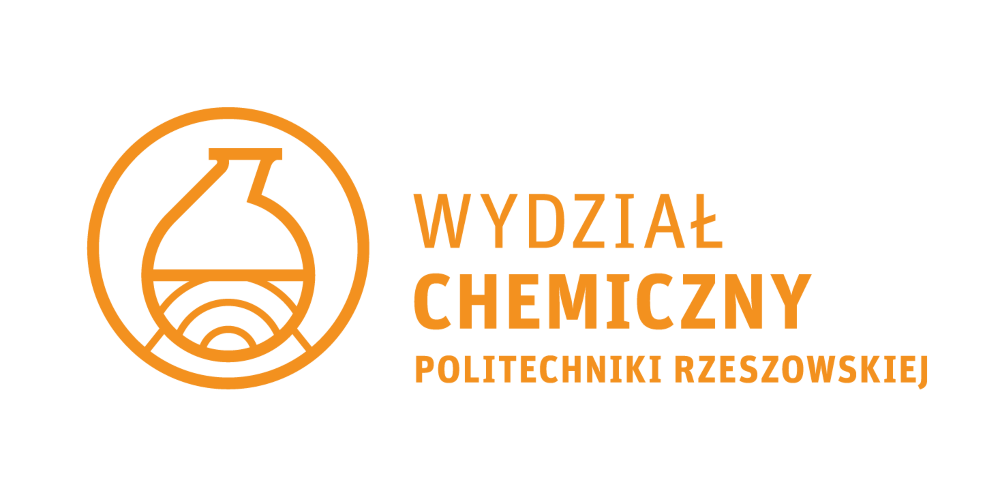

Materials science and corrosion
Some basic information about the module
The aim of studying and bibliography
The main aim of study:
The acquisition of fundamental knowledge in the frames of material science in relation to chemical industry as well as corrosion mechanisms and corrosion protection.
The general information about the module:
In the frames of study a student obtains knowledge and ability in the scope of material science especially in relation to metals and polymers as well their corrosion protection.
Bibliography required to complete the module
| 1 | G. Wranglen | Podstawy korozji i ochrony metali | WNT, Warszawa. | 1985. |
| 2 | Praca zbiorowa pod red. Z. Galusa | Elektroanalityczne metody wyznaczania stałych fizykochemicznych | PWN Warszawa. | 1979. |
| 3 | H.H. Uhlig | Korozja i jej zapobieganie | PWN, Warszawa. | 1986. |
| 4 | M. Pourboix | Wykłady z korozji elektrochemicznej | PWN, Warszawa. | 1978. |
| 5 | Praca zbiorowa pod red. J.Głuszka, M. Danielewskiego | Ćwiczenia rachunkowe z korozji i ochrony przed korozją | wyd. Politechniki Wrocławskiej, Wrocław. | 1990. |
| 6 | A. Kisza | Elektrochemia. Cz.II – Elektrodyka | WNT, Warszawa. | 2001. |
| 7 | I.J. Klinow | Korozja i tworzywa konstrukcyjne | PWN, Warszawa. | 1964. |
| 1 | Praca zbiorowa pod red. J.Głuszka, M. Danielewskiego | Ćwiczenia rachunkowe z korozji i ochrony przed korozją | wyd. Politechniki Wrocławskiej, Wrocław. | 1990. |
| 1 | G. Wranglen | Podstawy korozji i ochrony metali | WNT, Warszawa. | 1985. |
Basic requirements in category knowledge/skills/social competences
Formal requirements:
Positive remarks obtained for the following studies: general and inorganic chemistry, physical chemistry, chemistry and technology of polimers
Basic requirements in category knowledge:
The knowledge of foundations of inorganic chemistry, organic chemistry, physical chemistry as well as in the range of properties of polymers.
Basic requirements in category skills:
The knowledge and competence in the area of the work in chemical laboratory.
The knowledge of the rules in the area of using of chemical literature.
Basic requirements in category social competences:
The ability of individual and cooperative work. The ability of responsible and safe work in chemical laboratory. The inquisitiveness and ability of knowledge mining.
Module outcomes
| MEK | The student who completed the module | Types of classes / teaching methods leading to achieving a given outcome of teaching | Methods of verifying every mentioned outcome of teaching | Relationships with KEK | Relationships with PRK |
|---|---|---|---|---|---|
| MEK01 | Student comprehends causations and mechanisms of corrosion of materials in surrounding environment. | lecture, laboratory | colloquium, written report, observation of performance |
K-W05+++ K-U21+ |
P6S-UW P6S-WG |
| MEK02 | Student knows in sufficient degree the rules and methods of corrosion protection of objects. | Lecture, laboratory | colloquium, written report, observation of performance |
K-W08++ |
P6S-WG |
| MEK03 | Student is able to find a respective material for given chemical process and environment | lecture, laboratory | colloquium, written report, observation of performance |
K-U18++ K-K04+ |
P6S-KR P6S-UW |
The syllabus of the module
| Sem. | TK | The content | realized in | MEK |
|---|---|---|---|---|
| 3 | TK01 | W01,W02,L02,L03,L05 | MEK01 | |
| 3 | TK02 | W03,W04 | MEK01 | |
| 3 | TK03 | W05,W06,W07, W08,W09 | MEK01 | |
| 3 | TK04 | W10,W011,W012, L01,L7,L10 | MEK01 MEK02 | |
| 3 | TK05 | W13 | MEK01 MEK02 MEK03 | |
| 3 | TK06 | W14,W15 | MEK01 |
The student's effort
| The type of classes | The work before classes | The participation in classes | The work after classes |
|---|---|---|---|
| Lecture (sem. 3) | contact hours:
15.00 hours/sem. |
Studying the recommended bibliography:
15.00 hours/sem. |
|
| Laboratory (sem. 3) | contact hours:
30.00 hours/sem. |
||
| Advice (sem. 3) | |||
| Credit (sem. 3) | The preparation for a Credit:
15.00 hours/sem. |
The written credit:
2.00 hours/sem. |
The way of giving the component module grades and the final grade
| The type of classes | The way of giving the final grade |
|---|---|
| Lecture | Evaluation from the lecture based on the colloquium (OW) |
| Laboratory | Evaluation from laboratory based on colloquium and passed exercises (OL) |
| The final grade | Final rating = 0.5(OW+OL) |
Sample problems
Required during the exam/when receiving the credit
(-)
Realized during classes/laboratories/projects
(-)
Others
(-)
Can a student use any teaching aids during the exam/when receiving the credit : no
The contents of the module are associated with the research profile yes
| 1 | A. Domańska; P. Skitał | Electrodeposition of Alloy Nanostructures (Co-Ni) in the Presence of Sodium Benzene Sulfonate (SBS) and Their Application in Alkaline Hydrogen Evolution | 2025 |
| 2 | A. Domańska; P. Skitał | Mathematical modeling of the hydrogen evolution process on nickel, cobalt, and Co-Ni alloy coatings in acidic and alkaline environments | 2025 |
| 3 | A. Domańska; P. Skitał | Elektrolityczne powłoki metaliczne i stopowe jako katalizatory wydzielania wodoru | 2023 |
| 4 | A. Domańska; P. Skitał | Modeling of the Simultaneous Hydrogen Evolution and Cobalt Electrodeposition | 2022 |
| 5 | A. Domańska; P. Skitał | Electrolytic deposition of zinc-nickel alloy coatings with organic addition | 2021 |
| 6 | D. Saletnik; P. Sanecki; P. Skitał | The modeling of simultaneous three metals codeposition investigated by cyclic voltammetry | 2020 |
| 7 | J. Kalembkiewicz; B. Papciak; E. Pieniążek; J. Pusz; P. Skitał; E. Sočo; L. Zapała | Podstawy chemii | 2020 |